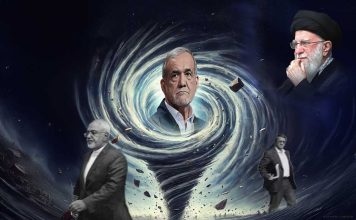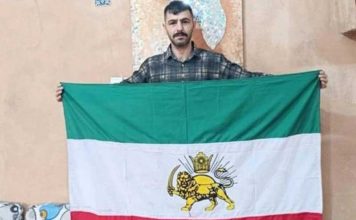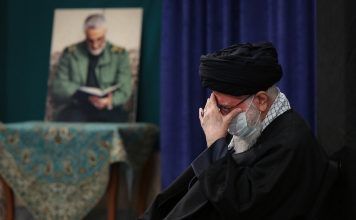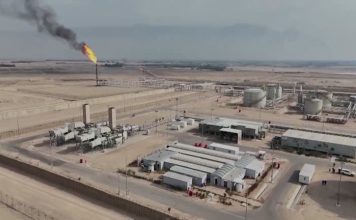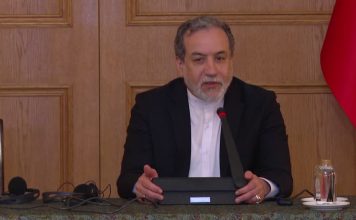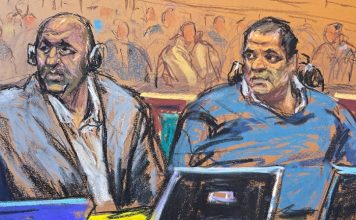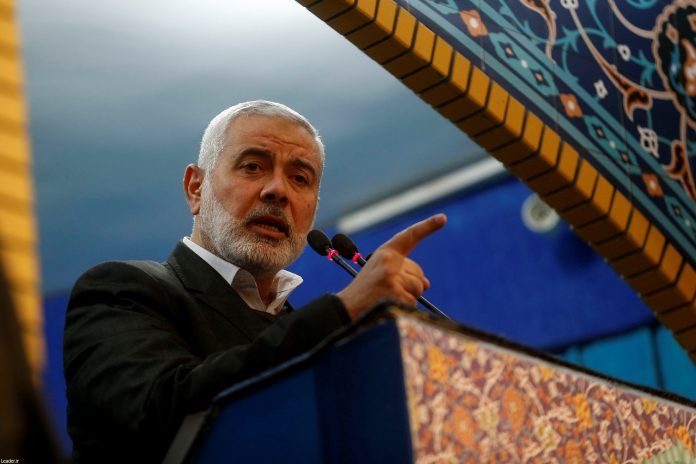
By Stephen Farrell and Samia Nakhoul
Nov 23 (Reuters) – Ismail Haniyeh, the Hamas leader based in Qatar, has been the tough-talking face of the Palestinian group’s international diplomacy as war has raged back in Gaza where his family home was destroyed in an Israeli air strike in November.
Appointed to the militant group’s top job in 2017, he has moved between Turkey and Qatar’s capital Doha, escaping the travel restrictions of the blockaded Gaza Strip and enabling him to act as a negotiator in the latest ceasefire deal or talk to Hamas’ main ally Iran.
[aesop_image img=”https://kayhanlife.com/wp-content/uploads/2023/06/2023-06-21T190222Z_1135694197_RC2UN1ACO0AU_RTRMADP_3_IRAN-PALESTINE-HAMAS.jpg” panorama=”off” credit=”Ali Khamenei meets with Palestinian group Hamas’ top leader, Ismail Haniyeh, in Tehran, Iran June 21, 2023. ” align=”center” lightbox=”on” captionsrc=”custom” captionposition=”left” revealfx=”off” overlay_revealfx=”off”]
“All the agreements of normalisation that you (Arab states) signed with (Israel) will not end this conflict,” Haniyeh declared on Qatar-based Al Jazeera television shortly after Hamas fighters launched their assault on Israel on Oct. 7, killing 1,200 people and taking more than 200 people hostage.
Israel’s response has been a fierce military campaign that has killed more than 14,000 people inside Gaza so far. Two of Haniyeh’s grandchildren are among those killed, his family said.
For all the tough language in public, Arab diplomats and officials in the region view him as relatively pragmatic compared with more hardline voices inside Gaza, where the military wing of Hamas planned the Oct. 7 that shocked Israel to its core.
While telling Israel’s military they would find themselves “drowning in the sands of Gaza”, he and his predecessor as Hamas leader, Khaled Meshaal, have shuttled around the region for talks over a Qatari-brokered ceasefire deal with Israel that includes exchanging hostages held by Hamas for Palestinians in Israeli jails, as well as more aid for Gaza.
Israel regards the entire Hamas leadership as terrorists, accusing Haniyeh, Meshaal and others of continuing to “pull the strings of the Hamas terror organisation.”
But how much Haniyeh knew about the Oct. 7 assault beforehand is not clear. The plan, drawn up by the Hamas military council in Gaza, was such a closely guarded secret that some Hamas officials seemed shocked by its timing and scale.
Yet Haniyeh, a Sunni Muslim, has had a major hand building up Hamas’ fighting capacity, partly by nurturing relations with Shi’ite Muslim Iran, which makes no secret of its moral and material support for the group.
During the decade in which Haniyeh was Hamas’ top leader in Gaza, Israel accused his leadership team of helping to divert humanitarian aid to the group’s military wing. Hamas denied it.
SHUTTLE DIPLOMACY
When he left Gaza in 2017, Haniyeh was succeeded by Yahya Sinwar, a hardliner who spent more than two decades in Israeli prisons and whom Haniyeh had welcomed back to Gaza in 2011 after a prisoner exchange.
“Haniyeh is leading the political battle for Hamas with Arab governments,” said Adeeb Ziadeh, a specialist in Palestinian affairs at Qatar University, adding that he had close ties with more hardline figures in the group and the military wing.
“He is the political and diplomatic front of Hamas,” he said.
Haniyeh and Meshaal have met officials in Egypt, which has also had a mediation role in the ceasefire talks. Haniyeh travelled in early November to Tehran to meet Iran’s supreme leader Ayatollah Ali Khamenei in Tehran, Iranian state media reported.
Three senior officials told Reuters that Khamenei told the Hamas leader in that meeting, that Iran would not enter the war having not been told about it in advance. Hamas did not respond to requests for comment before Reuters published its report, and then issued a denial after its publication.
As he has shuttled around the region, Israel said on Nov. 16 its warplanes hit Haniyeh’s house in Al-Shati, the Gaza refugee camp where he was born in 1962. It said his home “often served as a meeting point for Hamas’ senior leaders to direct terror attacks.”
As a young man Haniyeh was a student activist at the Islamic University in Gaza City. He joined Hamas when it was created in the First Palestinian intifada (uprising) in 1987. He was arrested and briefly deported.
Haniyeh became a protégé of Hamas’ founder Sheikh Ahmad Yassin, who like Haniyeh’s family, was a refugee from the village of Al Jura near Ashkelon.
In 1994, he told Reuters that Yassin was a model for young Palestinians, saying: “We learned from him love of Islam and sacrifice for this Islam and not to kneel down to these tyrants and despots.”
By 2003 he was a trusted Yassin aide, photographed in Yassin’s Gaza home holding a phone to the almost completely paralysed Hamas founder’s ear so that he could take part in a conversation. Yassin was assassinated by Israel in 2004.
Haniyeh was an early advocate of Hamas entering politics. In 1994, he said that forming a political party “would enable Hamas to deal with emerging developments”.
Initially overruled by the Hamas leadership, it was later approved and Haniyeh become Palestinian prime minister after the group won Palestinian parliamentary elections in 2006 a year after Israel’s military withdrew from Gaza.
The group took control of Gaza in 2007.
In 2012, when asked by Reuters reporters if Hamas had abandoned the armed struggle, Haniyeh replied “of course not” and said resistance would continue “in all forms – popular resistance, political, diplomatic and military resistance”.


